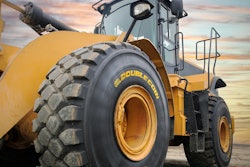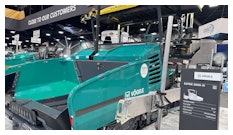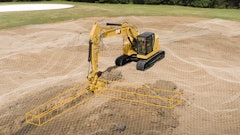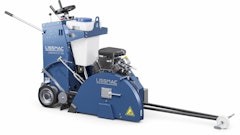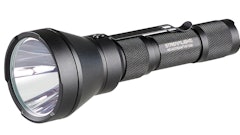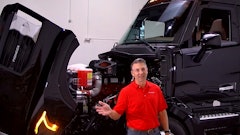![Asphalt Db Drum[59]](https://img.forconstructionpros.com/files/base/acbm/fcp/image/2022/08/Asphalt_DB_Drum_59_.62f52a91c552a.png?auto=format%2Ccompress&q=70&w=400)
There’s nothing more important than having the right equipment for the job you’re trying to do. When you are working on a tight schedule, where every day and dollar has to count to its maximum. But what you really need is not always obvious, and neither is how to decide. When it comes to the question of which type of asphalt plant you need, it might seem there are only two answers: batch or drum (continuous). However, there’s no perfect, one size fits all solution, and sorting out which is truly best for you and your business depends on a few things:
- Type of job and production schedule that must be kept
- Individual market characteristics (geography, tradition, etc)
- Local and regional industry regulation
- Short term and long term investment costs (equipment, maintenance, etc.)
Since using search engines on the internet can sometimes provide different results every time you use them, we spoke with some industry experts to get some solid answers for you. Let us go step-by-step through these important questions, and through each, determine the pros and cons of either choice.
The Basic Design
Before we launch into the first factor, let’s briefly establish a minimum baseline of understanding for the different models of asphalt plants available, as well as their basic designs and function.
The oldest and most well-known style of asphalt plant is the batch configuration. Iterations of which were first used as far back as the turn of the 20th century and the most common elements of which are nearly unchanged. Multiple large cold aggregate storage bins hold sorted material based on its size and are drawn together into the drying drums, heated up, passed through multiple screens and stored in a tower of hot aggregate bins.
According to the mix, the various hot aggregates are weighed alongside the required amount of sand and other fillers, as well as the binder. One batch at a time, all these weighed materials are mixed together, passed into storage and eventually transported away.
Continuous plants operate in virtually the exact same manner and process, except that the fastest and most efficient models bypass the mixing tower and screens, instead opting for a counterflow mixer. The sized cold aggregate is sent to the drying drums according to the design mix, heated, blended with non-segregated RAP, fillers and the binder all in one non-stop process, that leaves the drum chamber and is hauled to a job site via truck.
When it comes to the continuous, also called “drum”, mixers there are three common variant configurations typically available on the market. Each relates to the way in which the aggregates are introduced in relation to the heat source and air flow:
- The older continuous plants are parallel flow drum mixers where the materials proceed in the same direction as the hot gases.
- A later variant is the counterflow drum mixer with the burner head placed part way into the drum to allow mixing with liquid asphalt to occur behind the burner, out of the gas stream. This prevents some hydrocarbon emissions and increases fuel efficiency over the parallel flow drum mixer.
- The most technologically advanced version of is a double barrel drum mixer, which provides a very uniform product. The internal counterflow dryer in the double barrel drum mixer gives the highest available thermal efficiency.
Job Types and Production Schedule
Batch style plants may seem to be at a disadvantage, but they still offer one thing that could very well be the deciding factor right at the top: Flexibility in production. For the contractor who needs to satisfy multiple customers or different projects on a day-to-day or, especially, within the same day, batch plants are extremely adaptable. It’s fairly easy for an operator to stop, switch the mixture to a new configuration, while maintaining a high quality end product. Smaller surfacing jobs spread out over an area can often reflect this need.
By comparison, the continuous plants are well suited for environments where they need to churn out massive quantities of mix, either immediately or in the near future.
Long stretches of highway or other high surface area jobs demand a near constant flow of consistent and workable material. A clear drawback to batch plants emerges here.
If your main concern isn’t flexibility, but quantity and timeframe, the continuous mixers dominate. Just like their name implies, batch plants obviously work in phases of interrupted work, starting at ~80/tons per hour (tph) and topping out at ~200/tph. Their counterparts have no interruption in flow, and can double that speed to start at approximately ~400/tph and can operate, in some cases, as high as ~800/tph.
Market Characteristics
The types of job and customer you may want to reach are only one part of the equation. Nothing exists in a vacuum. Because of that, it is vital to your success in plant selection to take stock and examine the specific market characteristics where you’re going to do business.
We already know that continuous mixers are more well suited for the types of job that require vast amounts of material, but that applies here, as well. Your market may deal in these types of job at a higher percentage of available contracts, more so than in others.
Continuous plants are, also, more adept when the geography of your area requires greater portability, easily relocated closer to current job sites, like the western part of the country where population concentration is less dense.
Economically, the competition in the hot mix/warm mix asphalt market might be much tighter, with more producers jockeying for contracts, even still, the drum plant is the way to go. Often times, though not in every case, those who can run the most RAP wins. We will address RAP more in the next section, but, suffice to say, the ability to better process high amounts of reclaimed asphalt pavement is key to being competitive.
Batch plant technology can sometimes dominate in an area based on tradition, and understanding your market is the only way to know. Sometimes this can express itself as “the way it’s always been done”, but in other cases it can be economic or experience driven.
Beyond that, there are certainly markets that produce a higher demand for smaller quantities of constantly changing mixtures, so it is important to take a proper inventory and do your due diligence.
Regulation
The government can often be the greatest source of unexpected hurdles in your process of selecting a new asphalt plant. Why? The easiest answer is that they make the rules. The more nuanced answer is that those rules vary, sometimes widely, between municipalities (if you’re working in just one state) and, especially, across state lines (if you’re a multi-state operation).
The fastest growing and changing area of regulation is in regards to sustainability and the environment. The most common way this effects your decision concerns reclaimed asphalt pavement (RAP). There are places where RAP use is required, and the percentages have to be measured accurately.
Both styles of plant can utilize RAP and incorporate it with virgin aggregate, but the drum design does so simply and efficiently. A batch facility needs a separate dryer and exhaust system for its RAP content. Continuous systems are much more RAP “friendly” in design. They combine the sized aggregates and RAP once in a single chamber along with the binders, all without interruption.
RAP usage is not the only environmental concern, however, there are noise ordinances, air quality, odor, emission standards, as well as thermal efficiency standards that must all be taken into account. It’s important to research these thoroughly. Where they come into play, once again, the continuous/drum plants have the bottom-line edge. They come out on top in every category. Ton-for-ton, drum mixers can produce the same amount of mix that a batch plan does for less energy.
Investment Costs
This brings us to our final factor. You might wonder why we saved the costs as the final section to cover, but the reason is rather simple. It doesn’t really matter how much the equipment costs, it doesn’t matter how inexpensive it is at face-value, if it doesn’t do the job you need it to do, and/or it’s going to be a drain on resources down the road.
According to experts at Astec Industries, capital investments for continuous plants are lower for equivalent production rates and RAP percentages, compared to similar batch systems. This doesn’t mean that their dollar amount prices are always less, but that when you take into account those factors, you’re getting more value. So, in cases where the budget is ultimately very tight, a batch system may still win out.
However, repair and maintenance costs tend to be lower on the drum mixing plants due to lower “plant iron”, which receives less wear and tear overtime due to a reduction in direct contact with the hot aggregate.
There are a lot of advantages to the continuous/drum mixing plants, but there is no one universal answer to fit every contractor in every situation. We shed some light here on some of the important factors in making the decision for your company, but it’s always helpful to do your own research too. The final choice will always be about how some best “fits” your needs, because there’s no way to account for everything, but you can be confident you made the most informed decision.




